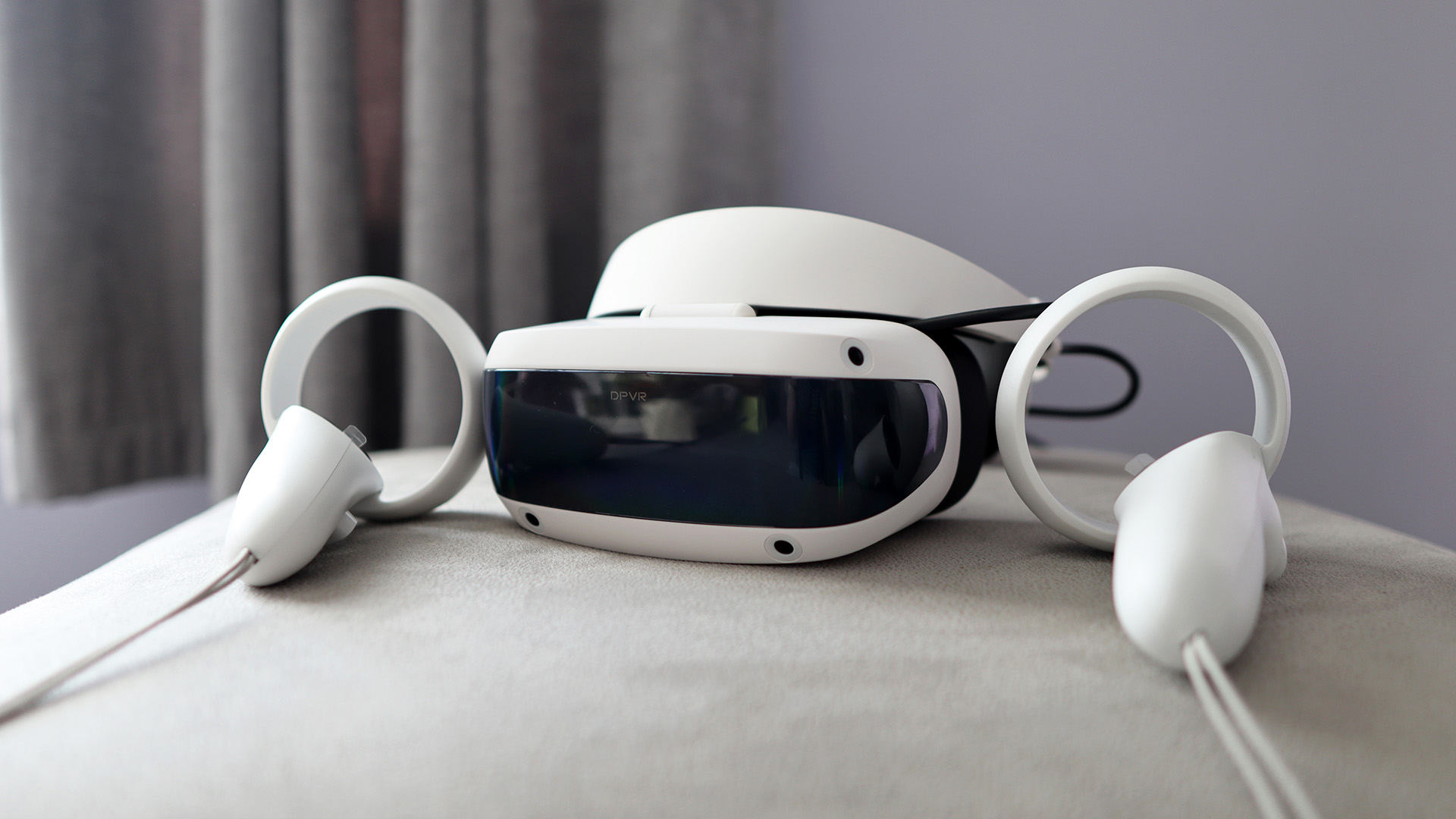Our Verdict
A solid VR headset with a good display, comfortable fit and responsive controllers that make playing PCVR titles a lot of fun. You’ll have to look past some technical issues, and a higher price, but the DPVR E4 is a good headset for PCVR fans, even if the Quest 3 is on the way.
For
- Lightweight, with a comfortable fit
- Solid displays and tracking
- Responsive controllers
Against
- Timing against the Quest 3 is a little iffy
- Technical hiccups do mar the experience somewhat
PC Gamer's got your back
VR is a funny old thing. It’s an experience that is gingerly making its way into the mainstream, especially with the explosion of popularity we saw with the Meta Quest 2 a couple of years ago. Despite this, PCVR has remained a bit of a niche, with headsets from all manner of manufacturers looking to strike the right chord with a quite specialist audience.
One such headset is the DPVR E4, an option from Belgian manufacturer DPVR that I’ve got here for testing. Priced at $549, it sits slap bang in the middle amongst competitors such as the HTC Vive Pro 2, and the HP Reverb G2, as well as the looming Meta Quest 3, of course. So, how well does it compare against this lot, and is it worth your time so close to the release of Meta’s latest candidate? I’ve been doing some testing to find out.
Stylistically, the E4 borrows looks from the original PSVR, with an uncannily similar frame that offers the same black on white colouring. It’s well-made, with plastics that feature a soft-touch, almost rubberised coating to it. This is especially nice to the touch, although with extensive use it may go the way of other devices with a similar coating and look a little grubby. Otherwise, the chassis features some plush padding around the back and sides to offer more support, while the lens surround is rubberised, although feels thin and cheap by comparison to the rest of the headset’s finishing.
The E4 is a pretty comfortable fit, once you’ve adjusted the headband, that is. The headset out of the box would fit a giant, but luckily with the dial on the back, it can be brought inwards to fit a range of head sizes. The audible clicks the dial makes are convenient for incremental adjustment and getting the E4 to fit just right. Doing so was easy, and within minutes I had the headset on and it was comfortable. You do have to get it just right though, as even one increment too tight can be the difference between experiencing a little of pain, and, well, none. There is also some adjustment on the top of the headband with some small rubber tabs to slot into, but this form of adjustment is a little fiddly, and hit and miss. Opting for some velcro here may well have been a better option for more versatile adjustment.
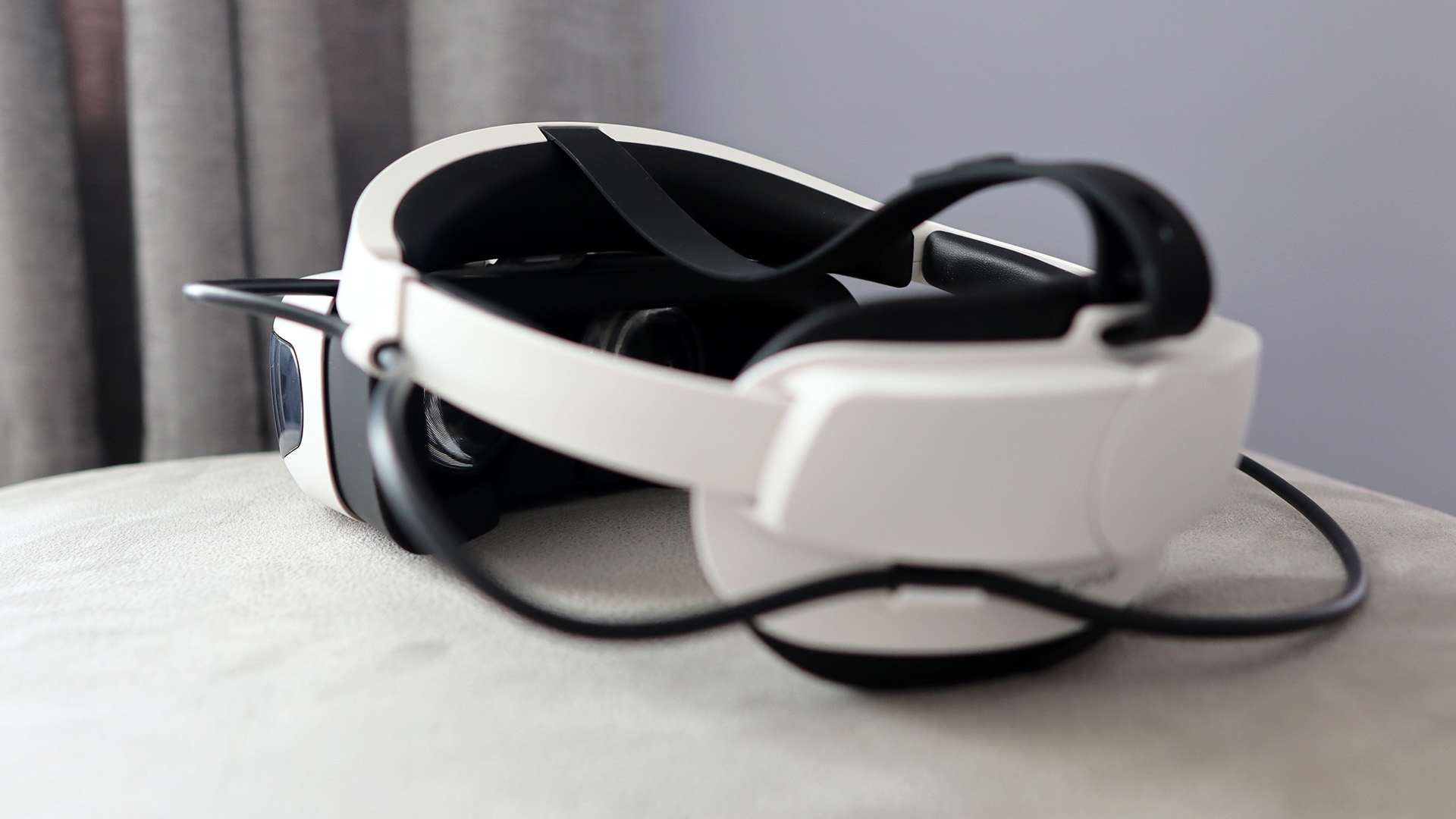
Tracking: Inside-out, visible light-based, 6DoF
Display: LCD
Resolution: 3664x1920
Refresh rate: 72Hz/90Hz/120Hz
FOV: 95 degrees
Audio: Integrated speakers
Inputs: DisplayPort 1.4, USB 3.0
Weight: 0.617lbs (280g) (without cable)
Price: £479/$549
One thing that is especially convenient with the E4 is that its display flips up, so you don’t need to take the headset off in order to see the outside world. This may be a bit of a novelty, given you are more likely to actually take the headset off after a VR session, but it reminds me of seeing people in spy films wearing night vision goggles and flipping them up—alright, it’s silly, but I find it kinda cool!
The setup process is okay, as long as your PC has a DisplayPort input, as well as a spare USB 3.0 port, and you’ve got a lot of patience. Plugging the headset in automatically loads the DPVR Assistant software, which gets the headset set up, and controllers paired, updating the firmware before you can do anything. However, for me, it wasn’t so easy. The laptop I was running the E4 on only had an HDMI port, but luckily DPVR provided an adapter cable which theoretically could get me up and running. I’m not whether this is a cable that’s going to be publicly available, but it does at least get the headset working, even if I can’t enjoy the buttery smooth 120Hz output because it’s not connected to a DisplayPort—it’s limited to the base 72Hz.
The issue then became overcoming the mountain of error codes that faced me during setup for the next half an hour or so. After multiple restarts and unplugging of cables, the E4 finally croaked into life after a firmware update to the controllers and headset itself. Setup from this point onwards was simple, with me marking out a boundary for a play area. There’s no need to set up a base station or markers, as the headset features inside-out tracking with 4 cameras. DPVR recommends a play area size of 2m by 1.5m, but even in a slightly smaller space (my bedroom/office is quite small), the E4 works totally fine.
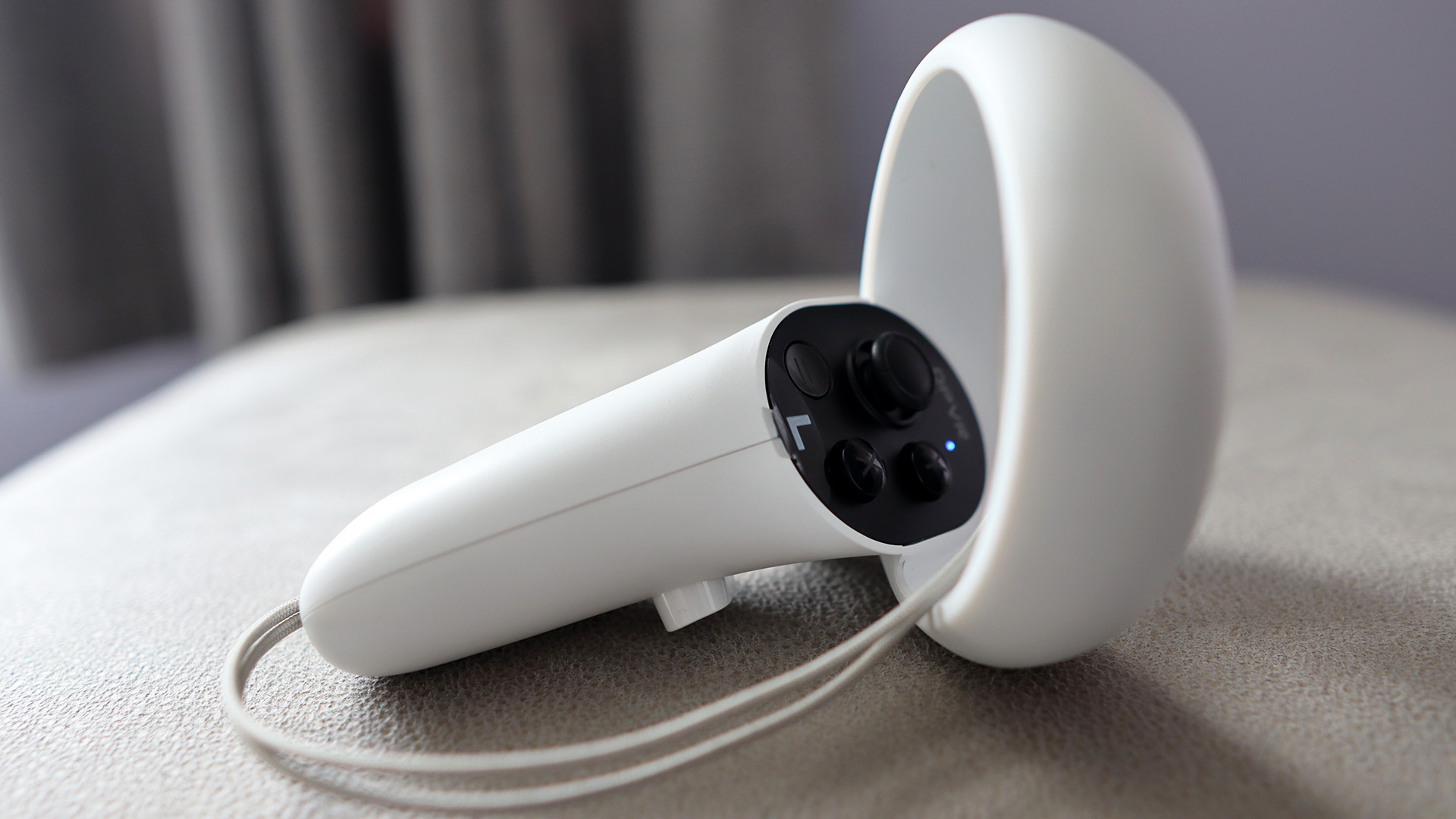
Then, the headset integrates itself into SteamVR, and all works well at last. Jumping into some games such as Half Life: Alyx and Superhot VR made for a fun experience, especially the latter. The original Superhot was a favourite of mine, and playing it in VR was good fun, even if I kept getting stuck at a certain level and my aim when throwing ashtrays and glass bottles was poor. That isn’t the headset’s fault though—either PE at school really did teach me nothing, or my aim has always been terrible. I’ll let you decide which one it is.
Even if I couldn’t experience the full brunt of the 120Hz refresh rate that the E4 provided using the adapter cable, the 72Hz base refresh rate still felt responsive. Combined with that, there was no screen door effect here, and the screen isn’t blurry either when things are adjusted properly. Images here were clear and detailed, with vivid colours, too. The total resolution of 3664x1920 provides a per-eye resolution of 1832x1920, which is lower than similarly-priced competitor products such as the HP Reverb G2 and Pico 4, which provide per-eye resolutions of 2160x2160. Nonetheless, the E4 offers a crisp screen with good detail and solid colours, which made games look rather good.
As for the controllers, they’re comfortable to hold and feel rather similar to those found on the Meta Quest 2. Pairing them with the headset was easy with a simultaneous press of menu button and X on left controller and DPVR button and A on right controller. They run off AA batteries, for which DPVR claims a total battery life of up to 6 hours. It would have been better with an internal rechargeable cell to save some hassle, but that can be alleviated using a pair of rechargeable AAs. The feedback they provide is responsive, and was in Superhot VR and Beat Saber, too.
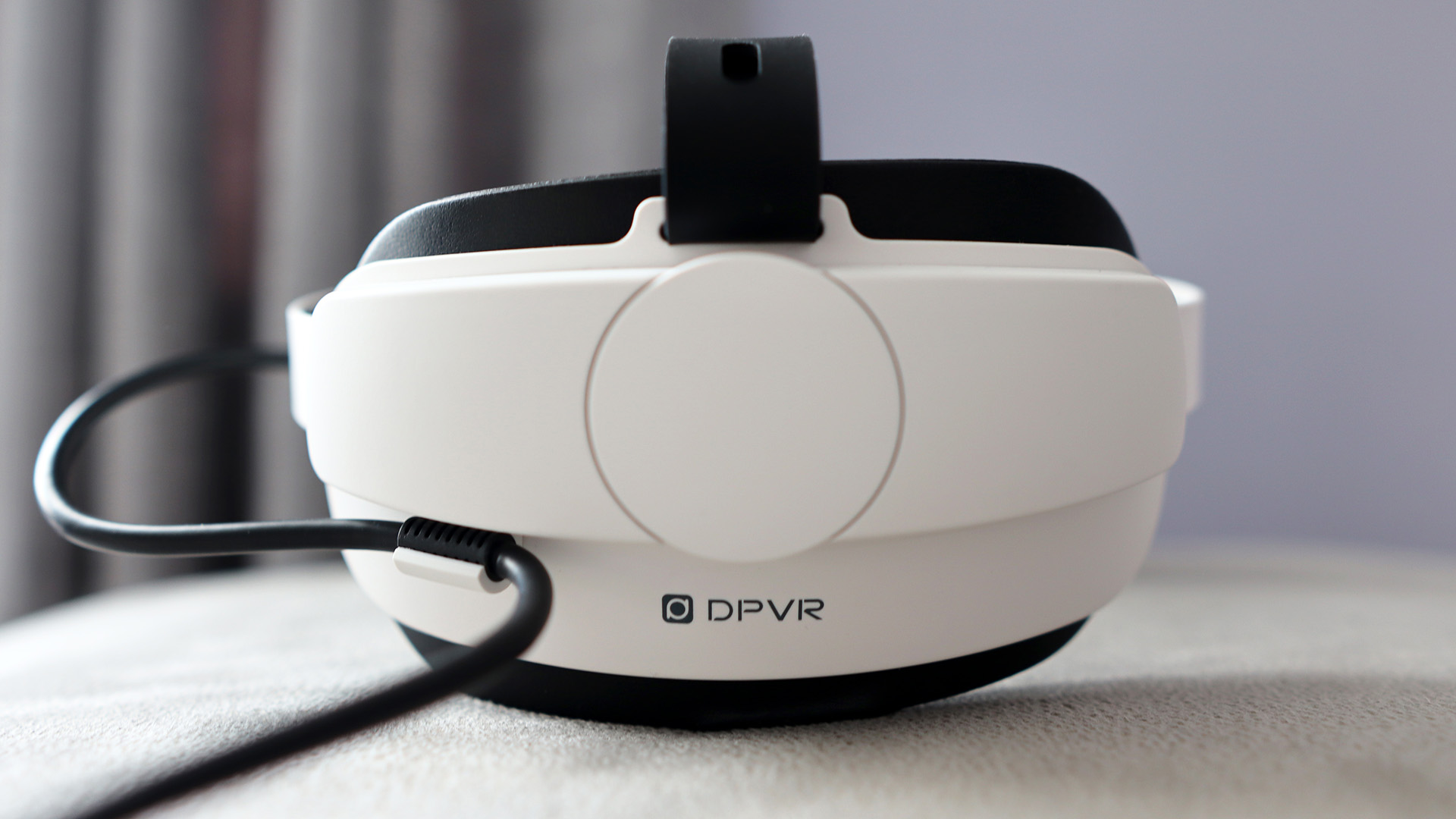
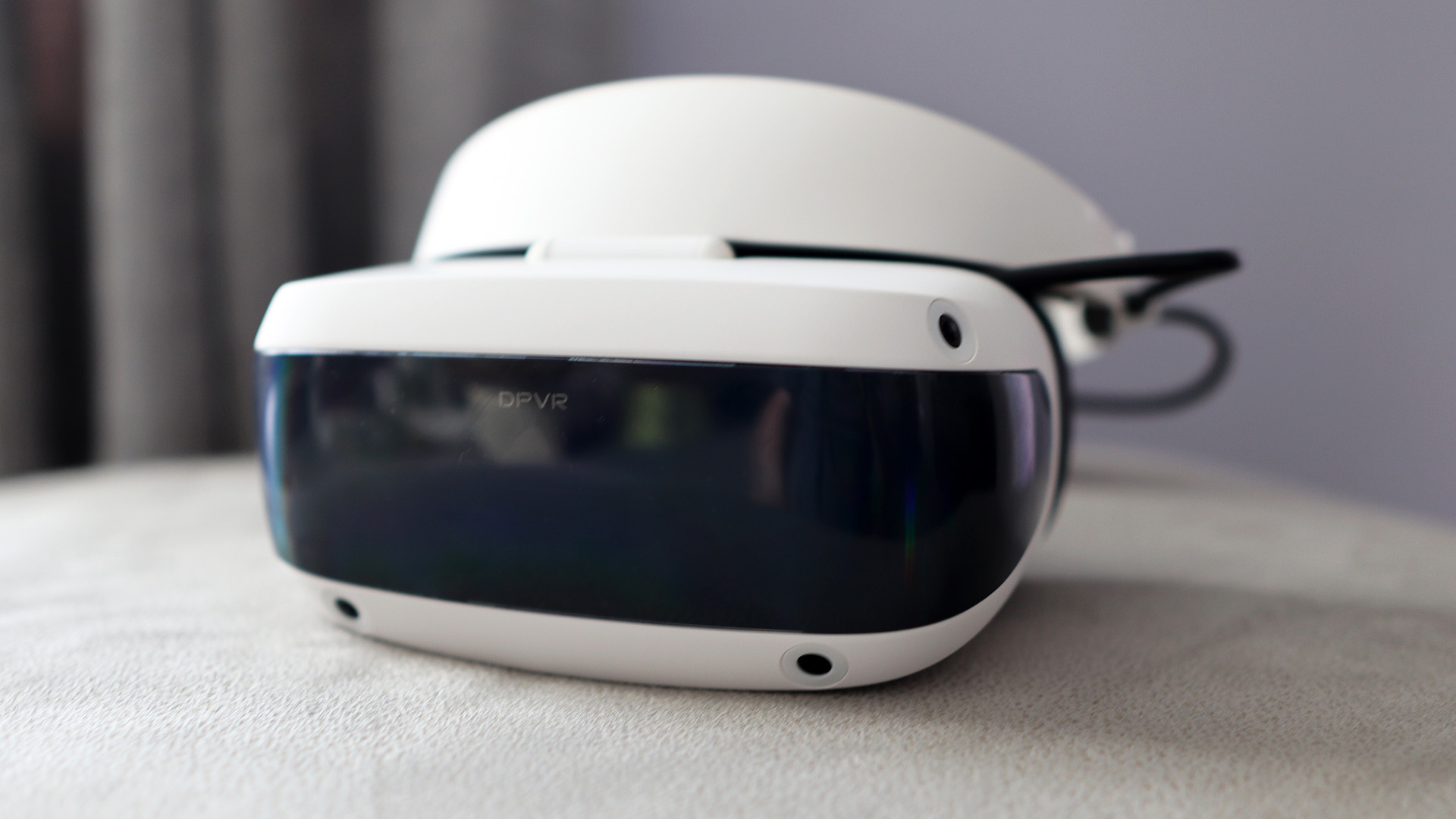
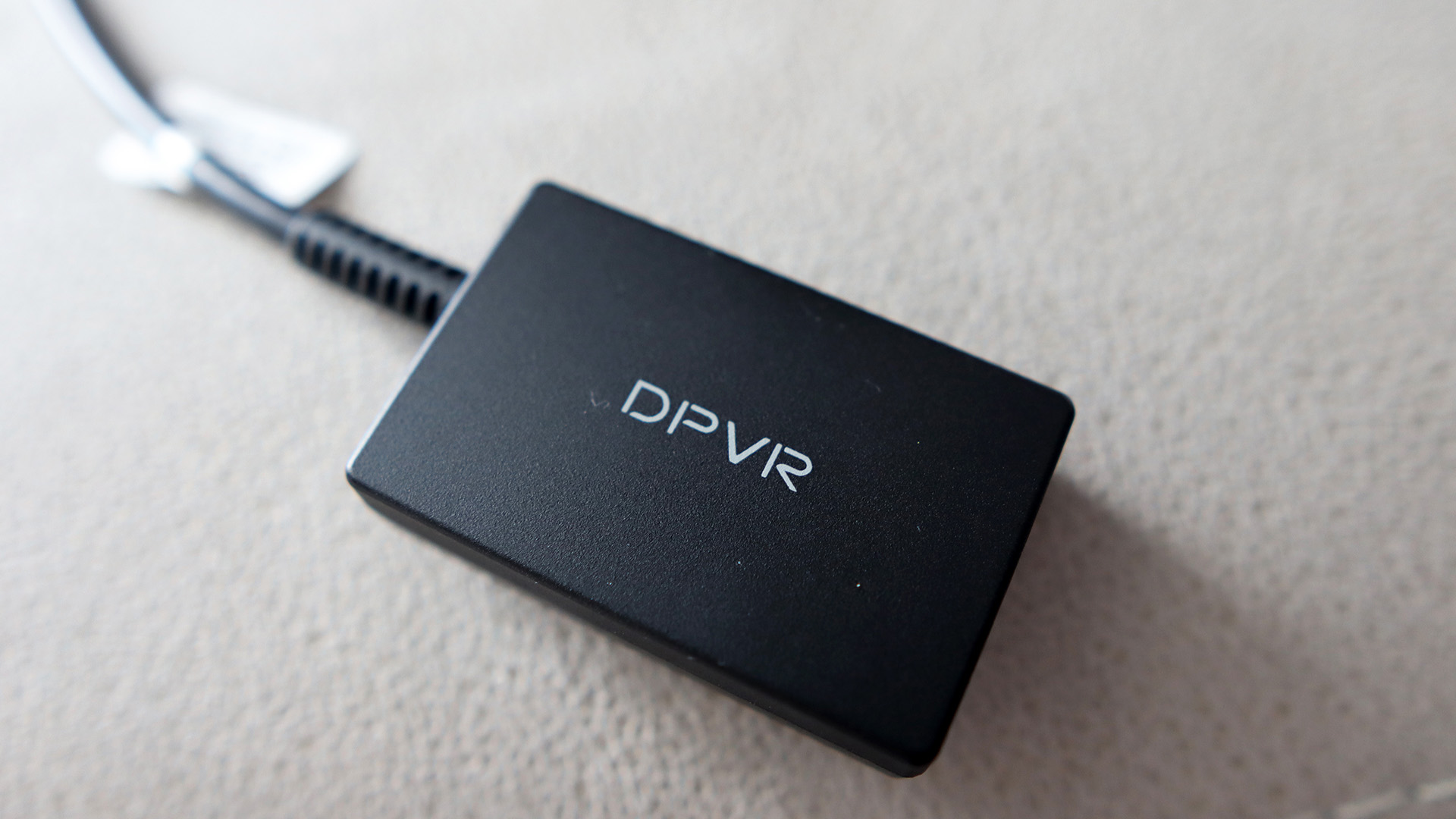
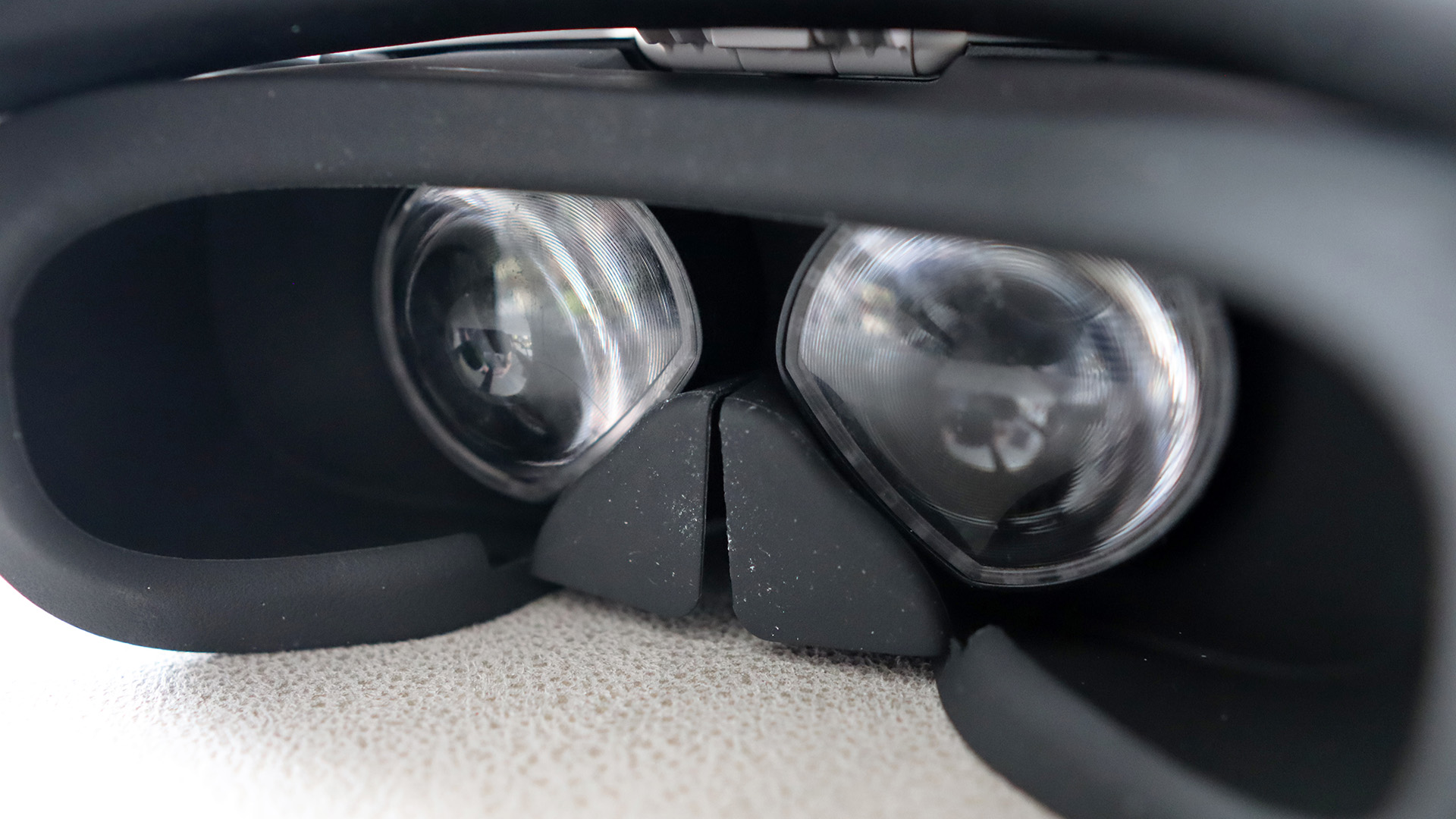

The obvious point of comparison here overall though is to the Meta Quest 2, arguably the best VR headset in this price bracket. For half the price of the DPVR E4, the Quest 2 offers more of a versatile experience, given you get the option of both a standalone device and a headset that works with PCs as a tethered headset with the right hardware. The Quest 2 also doesn’t require a mountain of cables to connect to your PC, unlike with the E4, especially if you lack a DisplayPort input. Its resolution is also identical, and both panels are LCD. On the flip side to this, the Quest 2, at 503g, weighs nearly double the E4’s 280g mass, making it a heavier headset to wear for longer periods. It may be swings and roundabouts, but for me, the Quest 2 is likely to be the better headset for most people, especially given that versatility.
Then there’s also the small matter of the looming Meta Quest 3 in the coming months. It’s priced more competitively compared to the E4’s $549, and offers a much slimmer profile, as well as an uprated resolution and processor compared to the Quest 2. This is likely to put it ahead of the E4’s spec sheet, and potentially offer a better overall experience on-paper. With this in mind, it leaves the E4 in a bit of a no man’s land. It’s a solid VR headset, bar a couple of technical hiccups, and offers a great VR experience. Timing here just seems a little iffy, and if you can wait a couple of months, the Quest 3 may be the better, and more sensible, choice.
A solid VR headset with a good display, comfortable fit and responsive controllers that make playing PCVR titles a lot of fun. You’ll have to look past some technical issues, and a higher price, but the DPVR E4 is a good headset for PCVR fans, even if the Quest 3 is on the way.

Reece Bithrey is a freelance journalist with credits in Trusted Reviews, Digital Foundry, PC Gamer, TechRadar, PCGamesN, and Custom PC magazine reviewing all sorts of computing gubbins, including keyboards, mice, laptops, and more. He also has his own blog, UNTITLED, has bylines for WatchGecko's online magazine, and graduated from the University of Leeds with a degree in International History and Politics in 2023. When not writing, you'll usually find him bellowing at virtual footballers on Football Manager or tinkering with mechanical keyboards.
